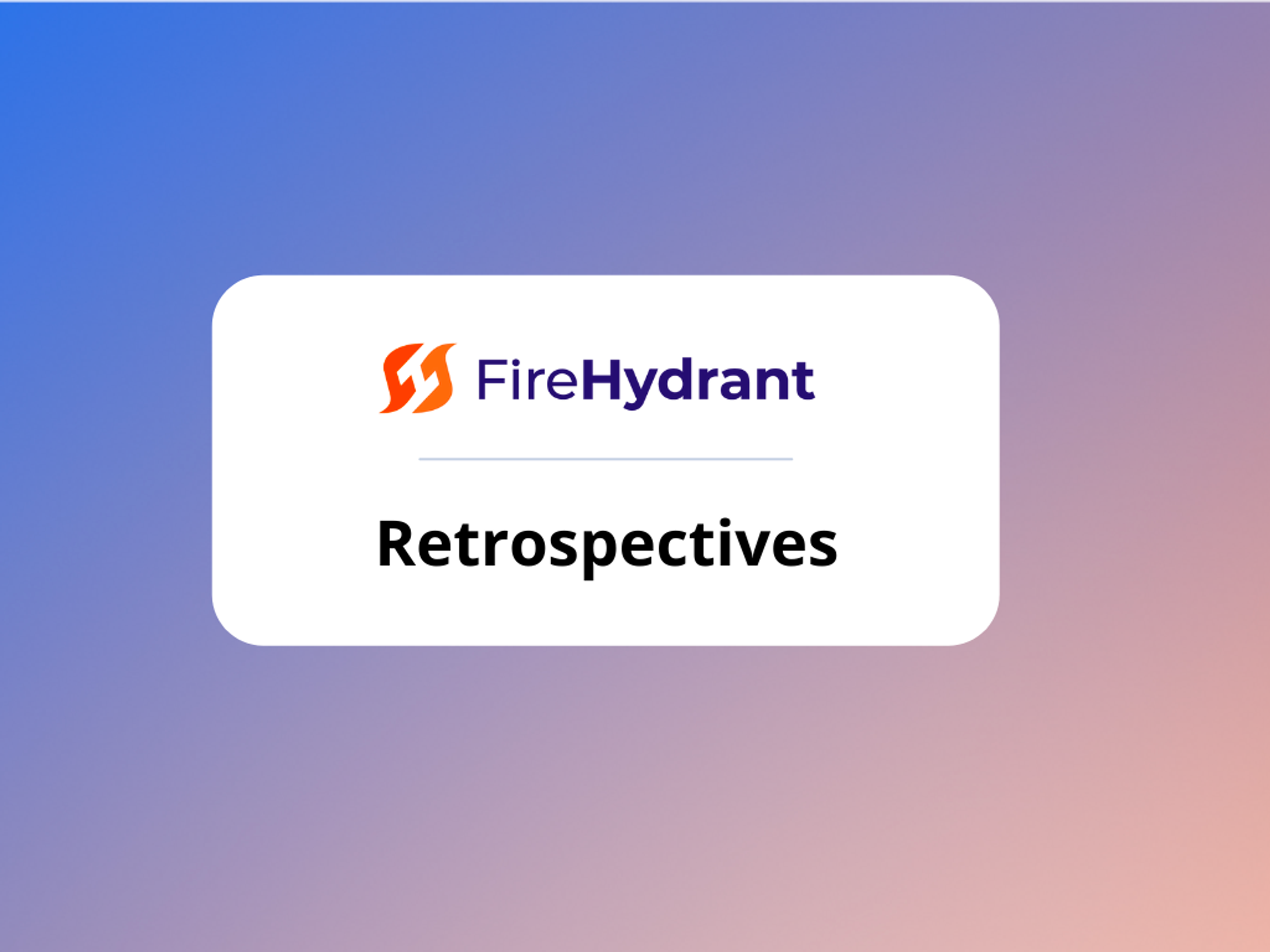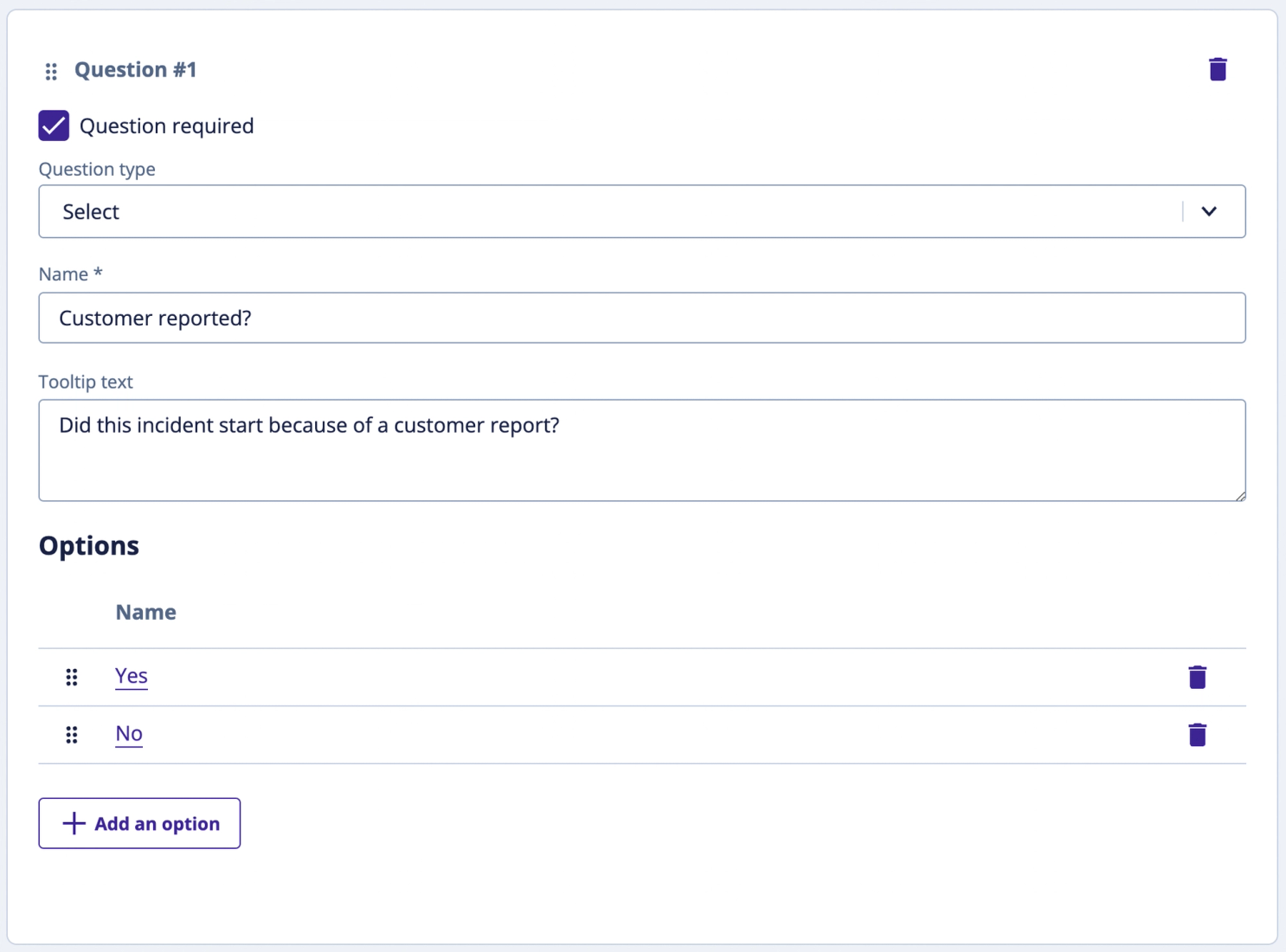Product update: ensure consistent data across all your retros with two new features
FireHydrant gives you a framework to run retrospectives. Now we're creating a better way to learn and analyze from retrospectives by guaranteeing consistent data and volume from your team.

FireHydrant captures your incident, from declaration through remediation, and gives you a framework to run your retrospectives. But retrospectives are only as effective as their inputs. Now we're delivering a better way to learn from and analyze retrospectives by guaranteeing consistent, structured, and sufficient data from your team.

First, we’re introducing select inputs, which allow you to configure a list of available options that a user picks from in the retro. It’s a small but mighty feature that eliminates a great deal of complexity (misspellings, word choice differences, tribal knowledge access, and the dreaded copy/paste cause codes), while adding a great deal of value. This gives you the ability to smoothly move through retros with your team, and export consistent data that's easier to analyze per incident and across multiple incidents.
We’re also giving you the option to mark fields as required. First, required fields help you illuminate to the team the difference between data that’s important and data that’s essential so they can concentrate on what matters most. Second, they help prompt more equitable participation across the team so you can avoid the squeaky wheel fallacy. And finally, teams that share full and insightful retros are able to earn more trust and confidence across the organization. Required fields also help you ensure a complete data set that’ll be predictably populated at each of the retros you run, making it easier to analyze incidents at scale for recurring issues.
These new features will help your organization get consistent, structured, and voluminous data out of your retrospective process. With complete and consistent data from every retrospective, you can start to tell a higher-level story about your continued path to reliability or advocate for pauses on feature work. Learn more about configuration and usage in our documentation.